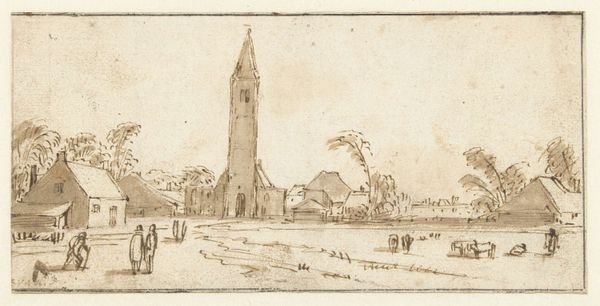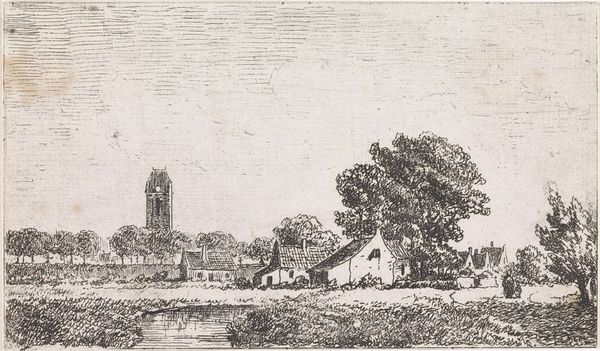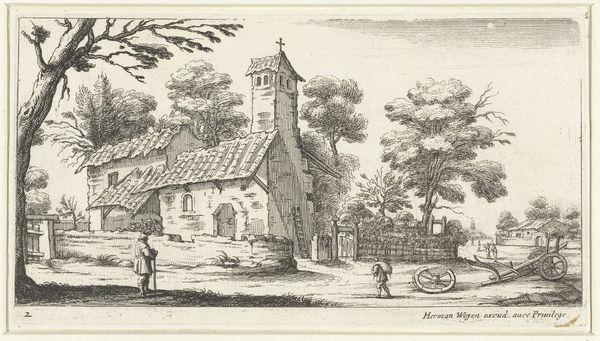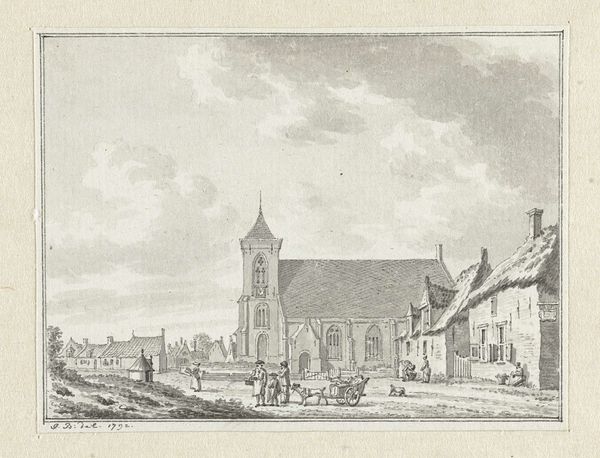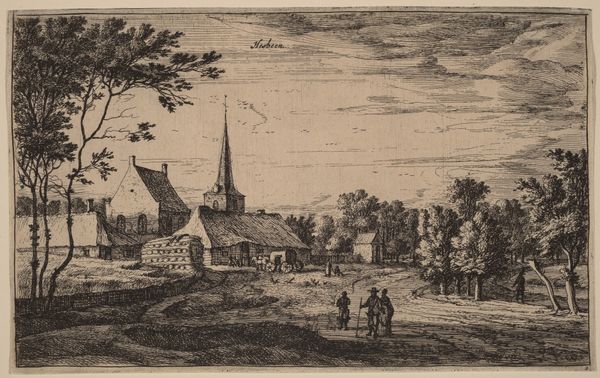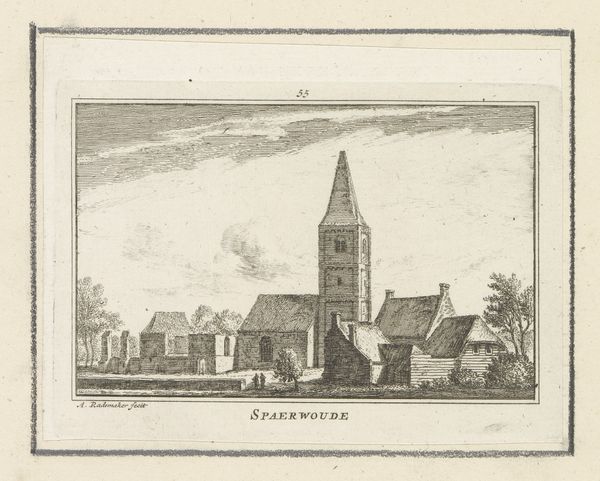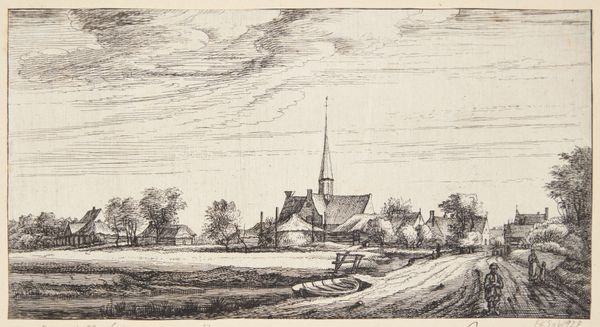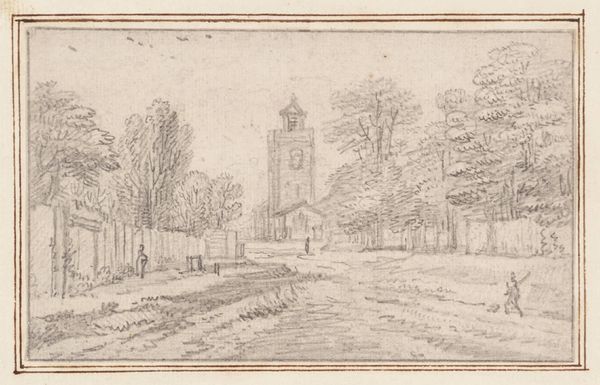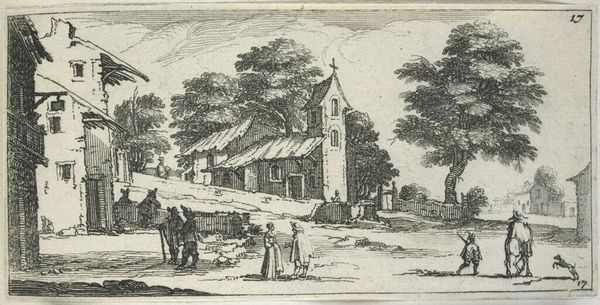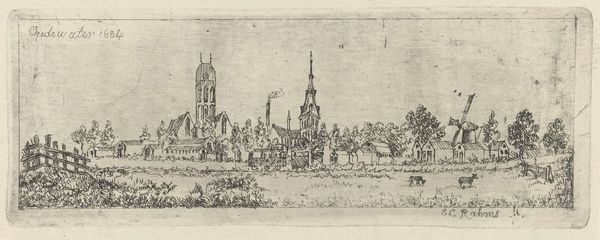
drawing, print, etching, ink
#
drawing
#
dutch-golden-age
# print
#
etching
#
landscape
#
ink
#
line
#
realism
Dimensions: plate: 8.5 × 17.7 cm (3 3/8 × 6 15/16 in.) sheet: 9 × 18.2 cm (3 9/16 × 7 3/16 in.)
Copyright: National Gallery of Art: CC0 1.0
Curator: Welcome. We are standing before "Landscape with a Meadow and a Village Church," an etching in ink, made around 1615 by Esaias van de Velde. Editor: There's a certain bleakness to this work, despite it ostensibly being a landscape. The stark, almost severe lines give it an unyielding, cold feel. Curator: The starkness is definitely achieved by his masterful employment of line. There's a tangible economy and purpose to each stroke of the etching needle, wouldn’t you agree? Every element contributes directly to the overall composition, without superfluous detail. Editor: Undoubtedly. The church, especially. The vertical thrust of its spire is an obvious symbol, a beacon of stability and perhaps even divine watchfulness over the flat, almost desolate landscape. It's a testament to faith, even amidst what appears to be harsh surroundings. Curator: I see it as a structural counterbalance, that verticality opposing the dominant horizontal orientation established by the meadow. This play of horizontal and vertical is so important compositionally, providing visual dynamism. It certainly transcends mere representation of a religious motif. Editor: But think of the villagers themselves. The fact that they are so small, almost incidental to the broader landscape, hints at something. A suggestion of man's relative insignificance when measured against time or the vastness of nature... Even a dog accompanies the travelers—it’s symbolic of guidance, fidelity, and even protection during their voyage in life. Curator: Fascinating interpretation. I'm struck, too, by the recurring linear patterns – look at the repetition within the thatched roofs and even in the way the fields are ‘lined’ with faint partitions. This provides, shall we say, a visual echo that marries form to content seamlessly. Editor: And what does that achieve other than visual unity? Symbolically, the repetition drives home the repetitive cycles of agrarian life. It reflects how the life and rituals of humanity mirror the consistency found in nature itself. Curator: Indeed. Seeing it again, considering both the structure and symbolic echoes, enhances the artwork for me in several dimensions. Editor: Agreed, a potent reminder of the visual language embedded within landscape itself.
Comments
No comments
Be the first to comment and join the conversation on the ultimate creative platform.


